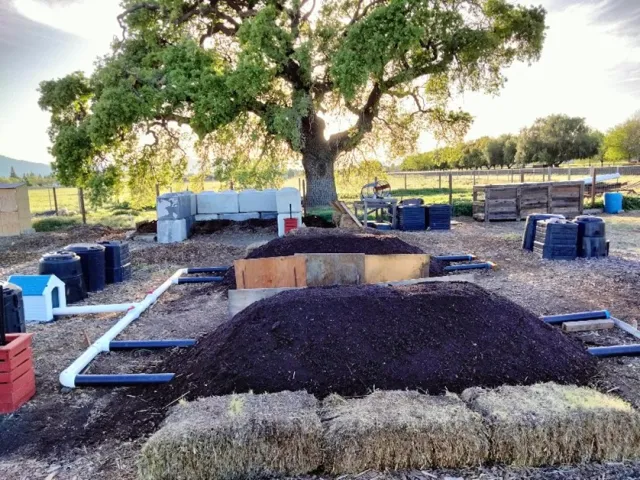UCCE Santa Clara County
Healthy Food Systems Healthy Environments Healthy Communities Healthy Californians
Aerobic Static Pile Composting at Martial Cottle Park
Are you interested in composting but hesitant about the hard work of turning a pile multiple times during its lifecycle? If so, aerobic static pile (ASP) composting might be the solution for you.
With ASP composting, a low-power blower (like those used for bouncy houses) pushes air through perforated pipes placed beneath a large pile of compostable organic materials. The bottom, or “plenum layer,” is made of porous materials such as wood chips and yard pruning's, which allow air to diffuse evenly into the compost pile above.
ASP systems are versatile—they can be built at a small, pallet-sized scale for home use or expanded into windrows over a hundred feet long for commercial composting. While ASP composting reduces the overall labor required, the setup does involve an extra step: adding an insulating layer of finished compost on top of the pile. This ensures that all the material reaches a high enough temperature for effective composting.

At the UCCE Composting Demonstration Site in Martial Cottle Park, San Jose, we are conducting trials to optimize the ASP composting process. Our experiments include using biochar as an additive to the compost mix and testing the optimal spacing between holes in the pipes. We compost manure from our Sunset 4-H farm and cuttings from our Urban Agriculture, Small Farms, and Master Gardeners sites at the park.
For a comprehensive overview of the aerobic static pile composting process, visit this site maintained by O2Compost.
